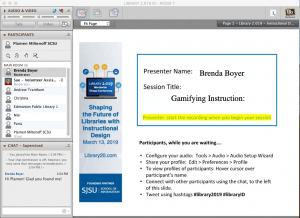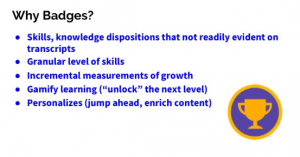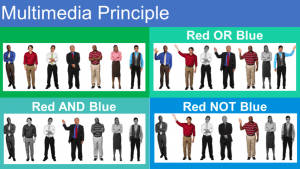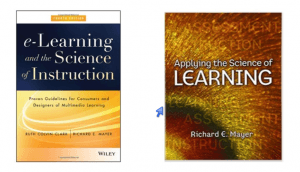CALL FOR CHAPTER PROPOSALS
Proposal Submission Deadline: February 12, 2019
Leveraging Technology for the Improvement of School Safety and Student Wellbeing
A book edited by Dr. Stephanie Huffman, Dr. Stacey Loyless, Dr. Shelly Allbritton, and Dr. Charlotte Green (University of Central Arkansas)
Introduction
Technology permeates all aspects of today’s school systems. An Internet search on technology in schools can generate millions of website results. The vast majority of these websites (well over 8,000,000 results for one simple search) focuses on advice, activities, and uses of technology in the classroom. Clearly teaching and learning with technology dominates the literature and conversations on how technology should or could be used in classroom settings. A search on school safety and technology can produce more than 3,000,000 results with many addressing technological tools such as video cameras, entry control devices, weapon detectors, and other such hardware. However, in recent times, cyberbullying appears to dominate the Internet conversations in references to school safety. With an increase in school violence in the past two decades, school safety is a fundamental concern in our nation’s schools. Policy makers, educators, parents, and students are seeking answers in how best to protect the physical, emotional, and social well-being of all children.
Objective of the Book
The proposed edited book covers the primary topic of P-12 school safety and the use of technology and technology used for fostering an environment in which all students can be academically successful and thrive as global citizens. School safety is defined as the physical, social, and emotional well-being of children. The book will comprise empirical, conceptual and case based (practical application) research that craft an overall understanding of the issues in creating a “safe” learning environment and the role technology can and should play; where a student’s well-being is valued and protected from external and internal entities, equitable access is treasured as a means for facilitating the growth of the whole student, and policy, practices, and procedures are implemented to build a foundation to transform the culture and climate of the school into an inclusive nurturing environment.
Target Audience
The target audience is leadership and education scholars, leadership practitioners, and technology coordinators. This book will be used as a collective body of work for the improvement of K-12 schools and as a tool for improving leadership and teacher preparation programs. School safety is a major concern for educators. Technology has played a role in creating unsafe environments for children; however it also is an avenue for addressing the challenges of school safety
Recommended topics include, but are not limited to, the following:
Section I – Digital Leadership
- Technology as a Climate and Cultural Transformation Tool
- School Leadership in the Digital Age: Building a Shared Vision for all Aspects of Learning and Teaching
- Ensuring Equity within a “One to One” Technology Framework
- Infrastructure within Communities
- Accessible WiFi for Low SES Students
- Developing Culturally Responsive Pedagogy
- Professional Development for School Leaders
Section II – Well Being
- Social Media and School Safety: Inputs and Outputs
- Tip lines: Crime, Bullying, Threats
- Communication and Transparency
- Platform for Social Justice
- Teaching Strategies to Promote Healthy Student Interactions in Cyberspace (Digital Citizenship?)
- Building Capacity and Efficacy, Platform to lower incidence of Cyber-Bullying, Boosting Instructional Engagement
- Literacy and Preparedness for the Influence and Consequence of Digital Media Marketing Campaigns directed toward Children, Adolescents, and Teens.
- Pioneering Innovative Technology Program in Curriculum: Fostering “Belonging” beyond Athletics & Arts.
Section III- Infrastructure Safety
- Campus/Facility Safety and Security
- Rural Schools vs. Urban Schools
- Digital A/V Systems
- Background Check – Visitor Registration (i.e. Raptor)
- Network Security Systems and Protocols
- User Filtering and Monitoring
- Firewalls
- Policy
- Appropriate use policies
- Digital Citizenship
- Web development policy
- Privacy
- Intellectual Property & Copyright
Section IV – Academic Success
- Professional Development for Classroom Teachers
- Pedagogical Integration of Technology
- Instructional Coaching for Student Engagement
- Increase Rigor with Technology
- Competence in the Blended/Hybrid/Flipped Classroom
- Technology to enhance learning for all
- Assistive Technology
- Accessibility issues
- Internet access for Low SES Students in the Blended/Hybrid/Flipped Classroom
- Personal Learning Design
- Differentiation for Student Efficacy
- Strategies for Increasing Depth of Knowledge
- Design Qualities for Enhanced Engagement
Submission Procedure
Researchers and practitioners are invited to submit on or before February 12, 2019, a chapter proposal of 1,000 to 2,000 words clearly explaining the purpose, methodology, and a brief summary findings of his or her proposed chapter. Authors will be notified by March 12, 2019 about the status of their proposals and sent chapter guidelines. Full chapters are expected to be submitted by June 12, 2019, and all interested authors must consult the guidelines for manuscript submissions at http://www.igi-global.com/publish/contributor-resources/before-you-write/ prior to submission. See Edited Chapter Template. All submitted chapters will be reviewed on a double-blind review basis. Contributors may also be requested to serve as reviewers for this project.
Note: There are no submission or acceptance fees for manuscripts submitted to this book publication, Leveraging Technology for the Improvement of School Safety and Student Wellbeing. All manuscripts are accepted based on a double-blind peer review editorial process.
All proposals should be submitted through the eEditorial Discovery®TM online submission manager. USE THE FOLLOWING LINK TO SUBMIT YOUR PROPOSAL. https://www.igi-global.com/publish/call-for-papers/call-details/3709
Publisher
This book is scheduled to be published by IGI Global (formerly Idea Group Inc.), an international academic publisher of the “Information Science Reference” (formerly Idea Group Reference), “Medical Information Science Reference,” “Business Science Reference,” and “Engineering Science Reference” imprints. IGI Global specializes in publishing reference books, scholarly journals, and electronic databases featuring academic research on a variety of innovative topic areas including, but not limited to, education, social science, medicine and healthcare, business and management, information science and technology, engineering, public administration, library and information science, media and communication studies, and environmental science. For additional information regarding the publisher, please visit http://www.igi-global.com. This publication is anticipated to be released in 2020.
Important Dates
February 12, 2019: Proposal Submission Deadline
March 12, 2019: Notification of Acceptance
June 12, 2019: Full Chapter Submission
August 10, 2019: Review Results Returned
August 10, 2019: Final Acceptance Notification
September 7, 2019: Final Chapter Submission
Inquiries can be forwarded to
Dr. Stephanie Huffman
University of Central Arkansas
steph@uca.edu or 501-450-5430
Reimagining Minnesota State
Monday, January 14, 2019
10:00 a.m. – 12:00 p.m.
Session 2: The Digital Age: The Impact and Future Possibilities Offered by Data and Technology
Thank you for registering to participate in the second Reimagining Minnesota State forum. The Forums have been designed to spark not only individual reflection but what we hope can serve as catalysts for discussions in a variety of venues. The Forum will be recorded and available for viewing on the Reimagining website.
Below are the directions whether you are attending in person or by live stream.
+++++++++++++++
notes Plamen Miltenoff
John O’Brien, President and CEO of EDUCAUSE
http://www.minnstate.edu/board/reimagining/docs/PDF_Final-Final-Minnesota-State-OBrien-Remarks-011319.pdf
from ad hoc to systemic institutional innovations
ask Rachel for the two books announced
Bryan Mark GIll AR library tour
Bryan Rachel OER “visit”
Catherine Haslag: Is there any research to show students retention in an online class vs a face-to-face course?
the challenge is not collecting, but integrating, using data.
silos = cylinder of excellence.
technology innovation around advising. iPASS resources.
adaptive learning systems – how students advance through the learning process.
games and simulations Bryan Mark Gill. voice recognition,
next 3 to 5 years AR. by 2023 40% with AR and VR
AI around the controversial. Chatbot and Voice assistants.
Unizin: 13 founding members to develop platform, Canvas, instructional services, data for predictive analytic, consistent data standard among institutions,
University innovation Alliance. Analytics as the linchpin for students’ success. graduation rates increase. racial gap graduation. Georgia State.
digital ethics. Mark Gill and Susana Nuccetelli. digital ethics: Susana Nuccetelli brought her students from the Philosophy Dept to Mark Gill’s SCSu Vizlab so we can discuss ethics and AI, last semester. jobrien@educause.edu
Tiffany Beth Mfume
http://www.minnstate.edu/board/reimagining/docs/Mfume-Minnesota.State.1-14-2019.pdf
assistant vice president for student success and prevention Morgan State U
the importance of training in technology adoption
Dr. Peter Smith, Orkand Endowed Chair and Professor of Innovative Practices in Higher Education at University of Maryland University College
social disruption, national security issue,
Allan Taft Candadian researcher, 700 hours / year learning something. 14 h/w.
learners deserve recognition
free range learning.
how do we get a value on people from a different background? knowledge discrimination. we value it on where they learned it. then how you learned it and what you can do with it. talent and capacity not recognized.
we, the campus, don’t control the forces for a very first time. MIT undergrad curricula is free, what will happen. dynamics at work here. declining student numbers, legislation unhappy. technology had made college more expensive, not less. doing the right thing, leads to more disruption. local will be better, if done well. workplace can become a place for learning.
learning is a social activity. distance learning: being on the farthest raw of 300 Princeton lecture. there is a tool and there is people; has to have people at the heart.
what will work not only for MN, but for each of the campuses, the personalization.
staying still is death.
Panel discussion
what is the role of faculty in the vendor and discussions about technology. a heat map shows that IT people were testing the vendor web site most, faculty and student much less.
Library 2.019 virtual mini-conference, “Shaping the Future of Libraries with Instructional Design
Wednesday, March 13th, from 12:00 – 3:00 pm US Pacific Daylight Time (click https://www.timeanddate.com/worldclock/fixedtime.html?msg=Library+2.019+ID&iso=20190313T12&p1=283&ah=3 to see in your local time zone).
Here are the links to the recordings of the sessions:
https://www.library20.com/page/recordings-id (you must be logged in)
This is a free event, thanks to our founding conference sponsor: School of Information at San José State University.
ATTENDING: We will send links for attending the conference a day or two before the event.
If you have friends or colleagues that wish to attend, this is a free event and we encourage you to share our information widely. However, please send them to the conference registration page (https://www.library20.com/instructionaldesign) rather than giving them the above link directly as it will allow us to track participation.
https://www.library20.com/instructionaldesign
https://www.library20.com/forum/categories/library-2-019-instructional-design-accepted-submissions/listForCategory
#library2019 #libraryid

Dana Bryant
Sandy Hirsch, SJSU School of Information.
Steven Bell, John Shank – integrating ID into practice. blended librarianship.
critical mass of librarians doing ID and libraries hiring IDs.
Michael Flierl
Assistant Professor of Library Science, Purdue University
Dana Bryant
Lead Instructional Technologist for Academic Technology Services, Woodruff Library, at Emory University
Lindsay O’Neill
Faculty, California State University, Fullerton’s Master of Science in Instructional Design and Technology Program
Steven J. Bell (moderator)
Associate University Librarian for Research and Instructional Services at Temple University
https://www.library20.com/page/library-2-0-schedule-gmt-4
What is ID: ID create an environment conductive to students’ success. Thoughtful and applied design. Making faculty and instructors’ life easier. Allow faculty to do what they do best.
Lindsey: solving the instructional problem with the tools at hand.
go-to ed tech? What is the hot tech right now?
Lindsey: H5P (open source) CC – licensed, Moodle, WordPress, build online tutorials for free (Isolde), Norway, well based, VR tours. Will H5P become paid? Michael: cell phones Dana: Emory VoiceThread. From the chat: Articulate365 (pricy), Kahoot, Peardeck, Yellowdig, vidgrid, Adobe Spark, Adobe POst, padlet, Groupme instead of Canvas, Vyond, Coggle, wakelet, Phinx
Suggestions for librarians who want to build ID skills. Dana: connect with the regional community if no ID on campus. Community of practice. Using ID tools, speakers outside of campus. Lindsey: teaching myself what is most interesting to me. what technologies are important. Find a learning community. Michael: repeat the others
keep up to date on ID theory and practices: Dana – ELI, OLC (Online Learning Consortium). ELearning Heroes. Lindsay: corporate word. Michael: POD
the one-shot instruction: what is the approach (q/n from the chat); Dana – ID as a services. person dedicated following up with people requested either ID class or training, open the line of communication. summative evaluation type of activity since we are failing to evaluate how well students absorbed the information. LIndsey: one-shot for basics (e.g. freshman), build scaffold program, reserved the one shot for meeting with librarians, for hands-on. Michael: work with faculty member and rewrite a program, build assessment rather then only deliver
areas of impact: subject matter librarians, working with faculty to use of the library resources, new faculty drawn in info and if not follow up, Canvas support. Michael: librarians and ID working directly with faculty rewriting their curricula, measure it, demonstrating library need, 3000 students – correlation. document the lib contribution to student learning directly, the teaching-learning culture change. using info and data in more authentic ways. Lindsey: disconnect the way librarian teach vs faculty teach. Coordination scaffolding.
q/n from the chat. easily. how can non ID librarian can easily implement ID type:
Lindsey: new to ID? Google. Jargon and Acronyms. re framing how you see ed technology. technology as something to get the job done. no need to get fancy.
Dana: same as Lindsey. But also learning theories and learning outcomes. From ID perspective: what they will come out with by the end of the session. action words.
Michael: mindset. what students want to learn, before what I will teach. backward design – understanding by design. UDL. Grab a friend and talk through.
Tara
ed tech is not getting job done:
clickers for attendance is horrible idea.
from the chat:
Dee Fink’s Taxonomy of Significant Learning1
https://www.byui.edu/outcomes-and-assessment-old/the-basics/step-1-articulate-outcomes/dee-finks-taxonomy-of-significant-learning
https://www.alt.ac.uk/
Association of Talent Development
Christy Tucker’s blog – Experiencing E-Learning
https://www.issotl.com/2019
https://e-learning.zeef.com/tracy.parish
https://www.lib.umich.edu/blogs/tiny-studies/using-pilot-study-test-and-assess-new-instruction-model
http://suny.edu/emtech
I had a really interesting role in grad school where we lived in the land between tech support and pedagogical / design support.
From Rajesh Kumar Das to All panelists and other attendees: (02:38 PM)
Good to hear from mike about affective learning. In this case, could you please focus what kind of technique is approprite for what, i.e. Didactic instruction, a low-complexity teaching technique such as a “Quiz Bowl”, or Jigsaw Method as high-complexity strategy, or both.
From Hailey W. to All panelists and other attendees: (02:36 PM)
As an ID librarian and the campus LMS administrator I struggle with getting them to see that other side of my role. That I’m not just “tech support”. Anyone else? Een jsut not being tech support?
From Vickie Kline to All panelists and other attendees: (02:44 PM)
As a librarian not formally trained in ID, I think a good entry point for exploring is Universal Design for Learning. We also need to pay attention to creating accessibility materials…
From Heather Quintero to All panelists and other attendees: (02:45 PM)
I always start with ADDIE… I am formally trained in ID and am an IT trainer for librarians. ADDIE is a framework for every class I make for both live and online classes. Don’t disregard ADDIE.
From Allison Rand to All panelists and other attendees: (02:47 PM)
The Wiggins and McTighe is a great book!
ADDIE Model
From Shane to All panelists and other attendees: (02:48 PM)
++SLIS open-source course on Instructional Design for Library Instruction
From Wendy to All panelists and other attendees: (02:49 PM)
Char Booth’s USER is also a very good model
http://www.modernlearning.com
https://web.mit.edu/jbelcher/www/TEALref/Crouch_Mazur.pdf
From Roberta (Robin) Sullivan to All panelists and other attendees: (02:53 PM)
@Rachel, Peggy, Shane – an open source course is available. Check out the SUNY’s Quality by Design (QbD): Strategies for Effective Teaching and Quality Course Design at: http://suny.edu/qbd This course is available as a facilitated version at least once each semester and as a self-paced non-facilitated version in Blackboard’s CourseSites. After completing the course requirements you can earn a Digital Badge to show your accomplishment.
From Naomi Toftness to All panelists and other attendees: (02:55 PM)
Just heard the terms “deliberate innovation” vs. “desperate innovation” that totally speaks to my situation with wanting to adopt the new cool tech
++++++++++++++++++++++
 SESSION LINK – https://sas.elluminate.com/d.jnlp?sid=2008350&password=LIB2019IDPart7 — If the session link doesn’t work for you, please copy and paste into your browser.
SESSION LINK – https://sas.elluminate.com/d.jnlp?sid=2008350&password=LIB2019IDPart7 — If the session link doesn’t work for you, please copy and paste into your browser.
Session Title: Gamifying Instruction: Breakouts and Badges!
Your Name and Title: Dr. Brenda Boyer, Librarian & Instructor
Your Library, School, or Organization Name: Kutztown Sr. High School, Rutgers University
Your Twitter Handle (@name): @bsboyer
Name(s) of Co-Presenter(s): Brenda Boyer
Area of the World from Which You Will Present: Kutztown, PA
Language in Which You Will Present: English
Target Audience: Instructional Design Librarians
Short Session Description: Build engagement for your online library instruction using LMS features, Breakout boxes, and digital badges.
Session Strand (use the “tag”): {Session Strand (use the “tag”):}
Full Session Description: It’s time to amp up your library instruction! Gamifying instruction in research skills such as database usage, advanced searching, & more can increase engagement and drive independent learning for students of all ages. This session will describe how learning management system (LMS) features can be combined with digital microcredentials (i.e. badges) and breakout boxes to gamify instruction that can be otherwise deemed boring (for both the learners and the librarian!).
Link to Conference Site Session Proposal (full URL with http://): https://www.library20.com/forum/topics/gamifying-instruction-breakouts-and-badges
Other Websites / URLs Associated with Your Session:
Your Bio: Dr. Brenda Boyer is a librarian and instructional designer. She has developed online instruction for secondary learners in the Kutztown (PA) School District, as well as for graduate and professional development learners at Wilson College and Rutgers University. She designed and instructs the Rutgers graduate course, Learning Theory, Inquiry, & Instructional Design, and is a frequent presenter at AASL, Internet@Schools. She has published articles in School Library Journal, Teacher Librarian, and School Library Connection.
Email: boyer.brenda@gmail.com
notes from Brenda’s session:
are we getting the job done, is our instruction sticking, what evidence we do have?
differentiate: who is ready to do what” at what skill level? how to bring everybody up to speed?
3 elements of Digital Gamification: leverage LMS (set game levels); how digital badges are paired 3. using digital breakout boxes to push challenge, skills
each chat as prerequisite for the next. prerequisite in LMS. Each game level is module. completed with a quizz. if they pass the quiz, opens challenge.1. what is page (facts about a tool to learn about[ what the tool does, feature, etc.) 2. suppe rshort video tour (3 min max), talk about something unique 3. quick quiz (max 5 q/s from the intro page and video). pass the quiz (100 %) to unlock the challenge level. 4. challenge level. digital breakout box embedded in the LMS. breakout using Google Forms. various locks (words, letter, numbers)

Badges why?

 Badgr, Credly, iDoceo
Badgr, Credly, iDoceo
Breakout Boxes

++++++++++++++++++++++
SESSION LINK – https://sas.elluminate.com/d.jnlp?sid=2008350&password=LIB2019IDPart8 — If the session link doesn’t work for you, please copy and paste into your browser.
Session Title: Improving Library Tutorials: The Multimedia Design Principles
Your Name and Title: Darlene Aguilar, Instructional Design Librarian
Your Library, School, or Organization Name: Loyola Marymount University
Your Twitter Handle (@name): @DarleneA_ID
Name(s) of Co-Presenter(s):
Area of the World from Which You Will Present: Los Angeles, CA
Language in Which You Will Present: English
Target Audience: Reference and Instruction Librarians, Instructional Designers, Tutorial developers, Academic Librarians
Short Session Description: This session will review Mayer’s (2001) Multimedia Design Principles to help improve instructional modules, tutorials, and videos.
Session Strand (use the “tag”): {Session Strand (use the “tag”):}
Full Session Description: Librarians are creating more online modules, videos, and tutorials to teach information literacy skills. Whether designing instruction online or in-person, research-based instructional methods are required and learning Mayer’s Multimedia Design Principles is the best place to start. In this session, I will review essential prior-knowledge on image types and working memory. I will then show learners how to minimize cognitive overload using these 12 principles: multimedia, spatial contiguity, temporal contiguity, coherence, modality, redundancy, individual differences, signaling, pacing, concepts first, personalization, and human voice.
Link to Conference Site Session Proposal (full URL with http://): https://www.library20.com/forum/topics/improving-library-tutorials-the-multimedia-design-principles
Other Websites / URLs Associated with Your Session: https://linkedin.com/in/darlene-aguilar/
Your Bio: Darlene Aguilar is an Instructional Design Librarian at Loyola Marymount University where she designs and develops video tutorials and online modules on information literacy and library related topics. Additionally, she provides “best practices” training in instructional design to other LMU librarians. She graduated from the University of Southern California with a Master’s in Education for Learning Design and Technology and previously worked at LAUSD for 7 years. She strives to remove learning barriers that are embedded in instruction and curriculum and make learning accessible to all learners.
Email: darlene.aguilar@lmu.edu
notes from Darlene Aguilar session: spacial contiguity, temporal contiguity. Modality: animation + narration better then animation + text, redundancy: animation and narration then animation + narration + text











